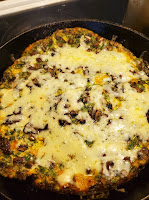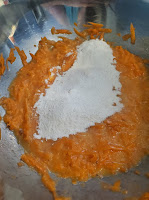Moka pots brew a different kind of coffee. The brew created is somewhere between coffee and espresso. The numbers I've found say it is 2-3 times as strong as coffee where espresso is 5-8 times as strong. Take that as you will as it’s clearly not an exact science. The brew is also, obviously, made in a different way, in fact it is quite the opposite to drip (or really any other brewing method) coffee. The water moves up through the grounds rather than allowing gravity to do the work. This means that there are no additional filters making it a low waste option and also a purer tasting coffee.
Moka pots and coffee are viewed as culturally significant in Italy (and elsewhere.) Coffee and coffeehouses were the beginning of this with coffee houses being the birthplace of many ideological and political movements in Europe including women’s coffee consumption being associated with the move to emancipation. The moka pot came along and facilitated the switch to espresso (or something similar) being a home drink rather than something you only go out for. This happened to coincide with an economic downturn in 1930’s Italy and so was kind of a big deal. Italians were able to keep coffee as an important part of their lives even though finances were taking a hit.
So now on to how to moka pot and one of my favourite ways to serve it.
Ingredients
Coffee grounds, medium to fine grind
Water
Ice
optional
To taste, Sugar
To taste, Milk, cream or dairy substitute of choice
Tools
Moka Pot
Kettle or pot
Spoon
Storage vessel: pitcher or jar
Drinking vessel (s)
Optional
Shaker
Directions
There are a few options here that I want to talk about quickly. If you want to be able to serve this at different sweetnesses I suggest a simple syrup and not sweetening the hot coffee. You can add as little or as much sugar or dairy product as you like to fit your tastes. You can pour hot coffee over ice but keep in mind this will weaken the coffee flavour, I like best to chill then pour over or shake with ice.
 Okay, we’re going to start by brewing our coffee. To do this we want to boil water in a kettle (you can also use regular water in the bottom of your moka pot but it will take longer and you will be more likely to brew a very bitter coffee.)
Okay, we’re going to start by brewing our coffee. To do this we want to boil water in a kettle (you can also use regular water in the bottom of your moka pot but it will take longer and you will be more likely to brew a very bitter coffee.) Fill the bottom of your moka pot to the line, not under, not over, just to it. This is important for taste as well as safety! Fill the grounds cup to the top, smooth it and make sure the edges are clean. Reassemble your pot and place over medium heat on the stove.
 The water will heat and start coming out of the spout. The user manual says to keep the lid closed but other tutorials say to keep it open so you know when it's done brewing. So my suggestion is do it with the lid closed and choose the other option at your own risk. If keeping it closed you will need to use your ears for when it is done.
The water will heat and start coming out of the spout. The user manual says to keep the lid closed but other tutorials say to keep it open so you know when it's done brewing. So my suggestion is do it with the lid closed and choose the other option at your own risk. If keeping it closed you will need to use your ears for when it is done. At this point you have moka pot coffee. You can serve this as you would a strong cup of coffee/ a weak espresso OR you can make a delicious iced coffee with it. As I said before you can pour this over ice as is but it will water the coffee down with the melted ice. If you choose to do this I would go for an Americano style iced coffee. I prefer to chill my brew in the fridge and then shake with ice.
 But first, are you sweetening with sugar or simple syrup? If using sugar it is necessary to do this while your coffee is still hot or the sugar will not dissolve! I go back and forth on this but today I will sweeten it while the coffee is hot by stirring in sugar before popping my jar in the fridge.
But first, are you sweetening with sugar or simple syrup? If using sugar it is necessary to do this while your coffee is still hot or the sugar will not dissolve! I go back and forth on this but today I will sweeten it while the coffee is hot by stirring in sugar before popping my jar in the fridge. When the coffee has cooled to at least room temperature, the colder the better, I will begin building my drink. First I will add ice to my drinking vessel (a clear glass is best for the aesthetic.) I will then add ice to a cocktail shaker, pour coffee over it and shake until it's too cold to touch. Strain this cold coffee over the ice in my cup and top with my dairy product. If this works right you will get a nice layered affect for Instagram pictures!
Serving
You serve it as a cold drink. I generally don't serve this with anything beside the sunshine! A fun addition though could be flavoured syrups, honey or maple syrup instead of sugar! Make it mocha moka with chocolate. Try cinnamon, vanilla, chai or even get really wild with mint or fruit! If you're interested in making your own syrups let me know and I’ll do a mini post on simple syrups and how to flavour them!
Short and Gritty
1. Boil water
2. Fill grounds cup, level, do not tamp
3. Pour water to fill line, not below, not above
4. Reassemble moka pot and place on medium heat
5. Listen for a fizzing sounds, it means its done
6. Sweeten, chill, serve











































